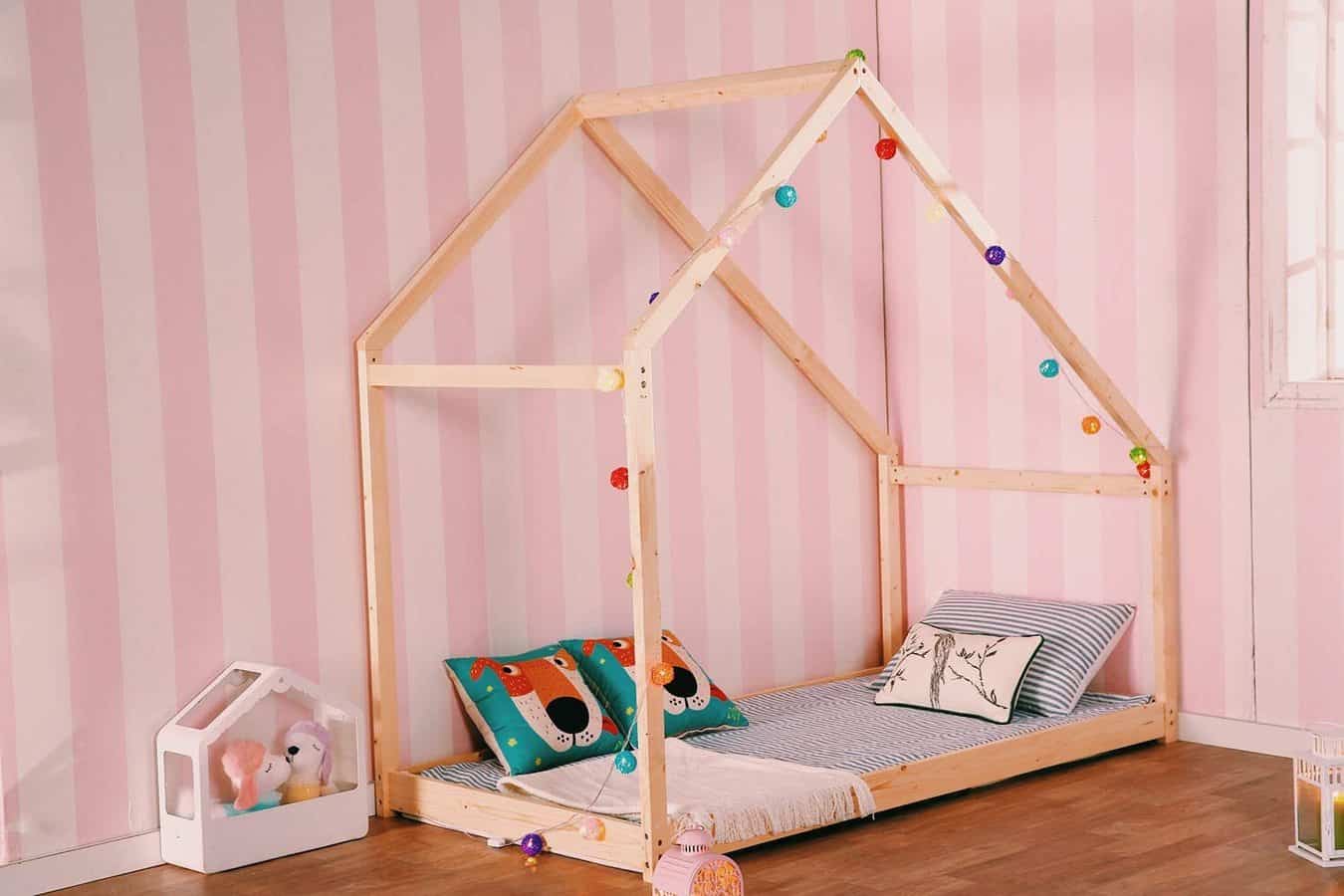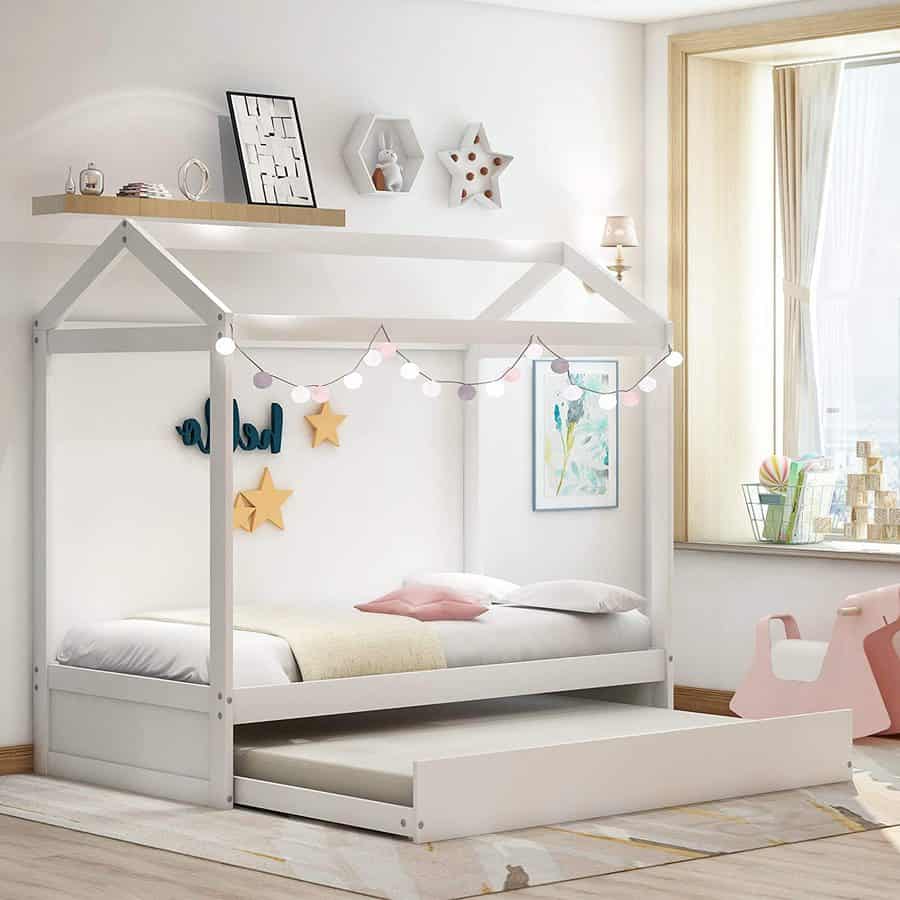Have questions about Montessori floor beds? This post has the answers!
Montessori floor beds are a hot topic with parents these days.
Low beds, or floor beds, are a concept created by Italian physician and educator Maria Montessori.
The Montessori method centers on a child’s innate ability to initiate her own learning within a prepared environment.
Along those lines, a floor bed is thought to allow children to exercise independence and follow their natural cues where sleep hygiene is concerned.

get this floor bed
What is a bed on the floor called?
A floor bed is exactly what it sounds like. It is a bed that sits low to the floor and does not have any bars or barriers like a traditional crib.
It’s used often in the Montessori method as it promotes independence at an early age.
It’s also traditionally called a Japanese futon or Japanese floor bed and is commonly seen in Japan.
Why are Montessori beds on the floor?
Placing the bed on the floor supports several Montessori principles, including: freedom of movement, promoting independence, and child empowerment.
Additionally, some feel that a floor bed is a more respectful choice for the child than a crib.
Basically, the idea of a floor bed stems from Maria Montessori’s way of thinking which stresses independence and freedom for the child within limits.
What age are floor beds for?
Typically around 2 months of age, the child is transitioned to a floor bed. Although, there are arguments for earlier or later transfer. Two months is ideal because the baby has ideally adjusted to a sleep schedule but has not yet begun rolling over.
Is it bad to sleep with your mattress on the floor?
There are medical reasons for and against sleeping on the floor.
Many people sleep on a mattress on the floor because they believe it will promote better blood circulation. This is a genuine benefit, and sleeping on the ground can also help reduce neck and back pain.
However, the claims about floor-sleeping and back pain are conflicting. While some say it reduces pain, others say it has the opposite effect. After all, the hard surface makes it difficult for your spine to maintain its natural curve.
A lot depends on your mattress of course. The better the mattress, the higher quality of rest you can expect.
Is it better to sleep on the floor or a bed?
This is a tricky question with no right answer for everyone.
If you feel that you need more support for your mattress than a regular bed can give you, then sleeping on the floor can actually benefit you. Many who sleep this way report a good quality of sleep and less pain in their joints and pressure points.
Sleeping on a mattress on the floor, of course, is not good for everybody, but it can work for some. You can always give it a try and, if it doesn’t work for you, then simply go back to a regular bed. In case you want to buy a mattress, check out this review from SleepStandards.

get this floor bed
When should you start a Montessori bed?
It’s usually recommended to transition to a floor bed somewhere between 2 and 3 years. Obviously, this also depends a lot on the individual child!
Usually, parents start to think about this when their child begins climbing out of their crib or shows other signs that they are craving their own independence.
We discuss toddler floor bed frames in more detail on our blog if you’re interested!
Thanks so much for reading all about Your Questions About Montessori Floor Beds Answered! Have a great day!
